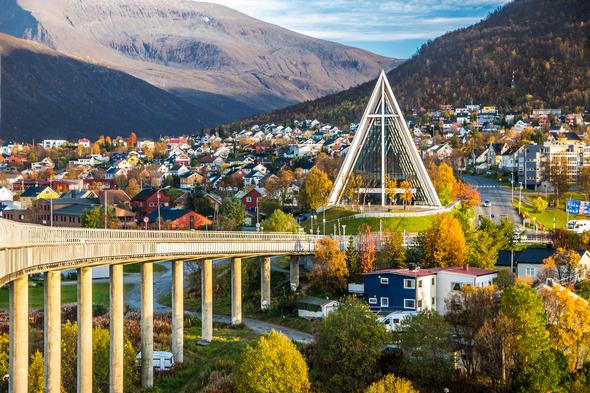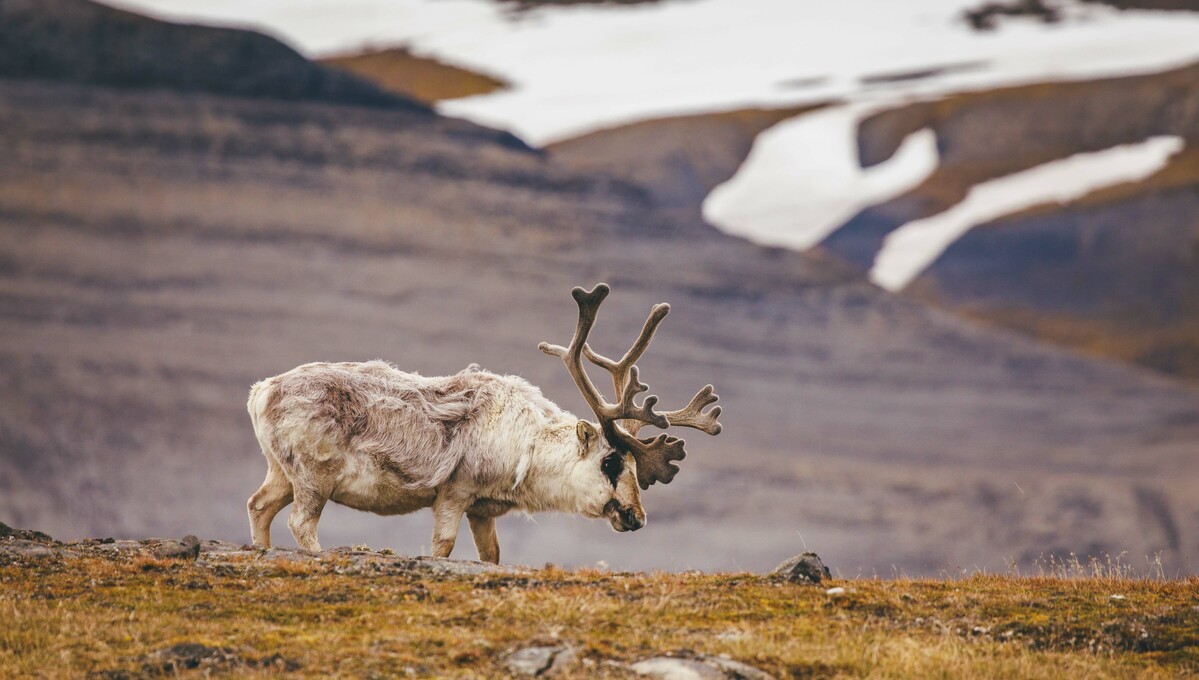The Arctic region spans eight countries, and offers a wealth of different travel experiences. For many visitors, a trip to the Arctic is all about the wildlife, and in particular the opportunity to see polar bears in the wild. Others are lured here by the fascinating human history, and by a desire to learn more about the people who cling to their traditional way of life in the face of encroaching modernity and a rapidly changing climate.

If you're considering an expedition cruise in the Arctic then you have a huge amount of choice when it comes to itineraries, depending on your own particular interests, the level of luxury you require, the time of year you're travelling and the wildlife or natural phenomena that you're hoping to see. In this article, we take a closer look at the main options...
1. Svalbard
Svalbard is a Norwegian archipelago that lies deep inside the Arctic Circle, and is one of the best places in the world to see polar bears in the wild. If you're looking for the quintessential Arctic experience then this is the itinerary to choose, and all of the main expedition cruise lines operate here throughout the Arctic summer.
Expeditions are usually round-trip sailings from Longyearbyen, Svalbard's main town, which lies on the west coast of the island of Spitsbergen. To get here you'll need to fly from mainland Norway, with many cruise lines operating their own charter flights from Oslo. Sometimes you will find voyages to Svalbard sailing from other northern European ports, including Reykjavik, Tromsø and Edinburgh.

The nature of an expedition cruise at these latitudes means that you'll have no fixed itinerary; instead you'll be guided by the weather conditions, sea ice cover and the expert navigational knowledge of your captain and crew. It is not unusual for a call to go out over the ship's public address system in the early hours of the morning if polar bears are spotted on the shore; you can also expect to see seals, walruses, whales and seabirds galore.
You will be amazed by the stark beauty of the natural landscapes, with plunging fjords, towering cliffs and huge glaciers dominating the landscape, and you will make Zodiac landings on deserted beaches and remote islands.

2. Northern Norway and the Northern Lights
The northern half of mainland Norway lies within the Arctic Circle, and there are plenty of expedition cruises that sail the full length of the Norwegian coast up to the North Cape. You're not going to find any polar bears here, but you may get the chance to see reindeer and seabirds including puffins, kittiwakes, fulmars, guillemots, razorbills, cormorants and skuas.
The key turnaround port in northern Norway is Tromsø, with its spectacular natural setting and striking Arctic cathedral, and the coastline is dotted with little fishing villages, impressive fjords and rugged islands.

Northern Norway is also the only place that you can reliably see the Northern Lights on a cruise (although sightings can never be guaranteed). Hurtigruten have operated Northern Lights cruises during the winter months for many years, with the option to partake in a host of fun Arctic activities such as snowshoeing, cross-country skiing and husky sledding.
Other cruise lines have started to offer Northern Lights itineraries in recent years, but it is worth remembering that northern Norway experiences almost total darkness during the winter months, and the seas can be decidedly lumpy, so choose your ship carefully!

3. Greenland, Canada and the Northwest Passage
Greenland is the world's largest island, though the human population is sparse and mainly confined to the southern coast. The majority of Greenland is covered by a vast ice sheet, and an expedition cruise here offers a true adventure to the edge of the map. You can expect to see breathtaking fjords, iceberg-filled bays, towering mountains, scattered ruins of ancient Norse settlements and tundra speckled with wildflowers.
This is also one of the best places to learn about the indigenous traditions of the Arctic, with Inuits making up the majority of Greenland's population, and visitors can't fail to be impressed by the hardiness and determination of those who live in the towns and villages that cling to the coastline, with their brightly coloured wooden houses. Cruise itineraries focused on Greenland will usually sail from Kangerlussuaq, accessible by charter flight from Copenhagen or Reykjavik, and you will also find itineraries that call here on the way to and from Iceland, Svalbard and Canada.

The Canadian Arctic is another epic wilderness just waiting to be explored, though expedition cruise itineraries here are less common, and will often involve a transit of the fabled Northwest Passage, the sea route that connects the North Atlantic and the Pacific. The Norwegian explorer Roald Amundsen was the first to transit the Northwest Passage in the early 20th century, and while retreating sea ice means the crossing is easier than it was, there is still no guarantee that your ship will make it all the way through without having to turn back.
Along the way you have the chance to see wildlife including polar bears, musk oxen and beluga whales, and you'll visit remote Inuit settlements at the edge of the ice floes. There are only a few weeks in summer when transiting the Northwest Passage is possible, and voyages can get booked up well in advance, particularly with those cruise lines that are less frequent visitors to this part of the Arctic.


4. The North Pole
There are few people on earth who can say that they've stood on the spot where all roads lead south, and an expedition cruise to the North Pole is a true collector's item. You'll need an icebreaker to get here, and for many years only option was the Russian nuclear icebreaker 50 Years of Victory, formerly chartered by Quark Expeditions, although no longer due to the sanctions imposed on Russia because of the war in Ukraine.

This has all changed however with the launch of Ponant's revolutionary hybrid-powered icebreaker, Le Commandant Charcot, in 2021, offering a level of luxury hitherto unheard of as she explores some of the most remote and barely explored corners of the polar regions.
A voyage to the North Pole doesn't come cheap, with fares reflecting the unique challenges of travel to the literal ends of the earth. There is no land at the North Pole, but you'll get the chance to step out onto the thick sea ice and get some great photos. You will also spot some wildlife along the way, but really this voyage is all about joining that elite club of polar pioneers.


Get your free Arctic guide
Our expedition cruising guide to the Arctic will tell you everything you need to know, including when to visit, what to see and how to get there.










